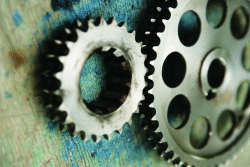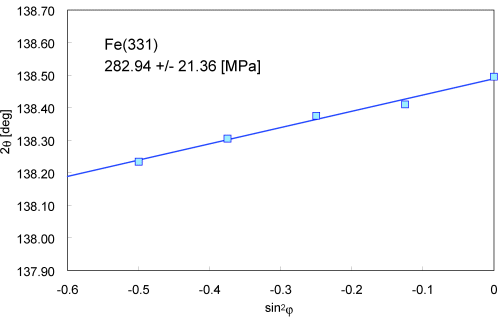Background
Automated alignment makes the Ultima IV simple to use for stress and texture measurements. The on-demand in-plane scattering capability made possible by CBO offers two distinct advantages when compared to traditional pole figure measurements.
In-plane data collection can use a line focus beam, reducing data collection times and improving sampling errors in non-homogeneous materials.

In-plane pole figure measurements removes the need to collect both reflection and transmission data sets for complete texture determination.
Supported stress and texture applications include:
- sin2 ψ (stress measurements)
- Bi-axial stress determination
- Conventional pole figures
- In-plane pole figures
- Inverse pole figures
- Transmission pole figures
- cos α (stress measurements)
- Orientation distribution function (ODF) determination
Investigation

For residual stress measurements the determination of absolute peak positions is crucial. Since peak positions are strongly effected by sample displacement errors, both CBO and automatic sample alignment are critical to both accurate results and ease of measurement. The figure below shows a traditional sin2ψ plot from an iron nut. This odd shaped sample is easily aligned and accurately measured using the Ultima IV configured with CBO.
On demand in-plane scanning provides the ultimate in flexibility when collecting pole-figure data. In this example pole figure data collected from a Cu (111) plate using the in-plane geometry extends out to the edge of the pole figure plot. It was not necessary to re-configure the system to point focus mode or re-mount the sample for transmission measurement to collect this "full", α = 0 to 90°, pole figure.

